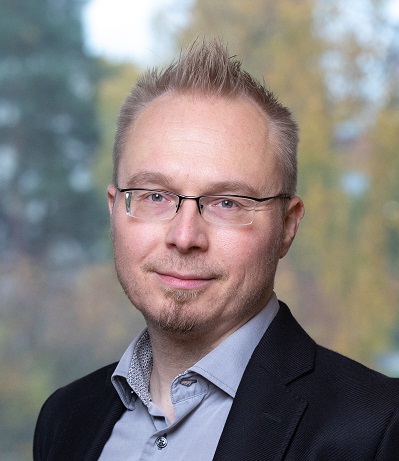Multidisciplinary research project based on origami seeks solutions for industrial needs

A joint project covering the fields of mathematics, engineering and arts is about to start at Aalto, where the aim is to study and develop folding technology for the needs of industry. In addition to Aalto, the project includes VTT as coordinator, and several companies from the forest industry to the machine design and cosmetics brands, such as Stora Enso, Metsä Group, Lumene, Mirka, Elomatic, Anpap, Orfer and Soften. Business Finland granted funding for the Co-Innovation project.
Folding originates from the origami culture, and the Miura fold and other periodically repeated forms are at the centre of the project. The end products of the project can take a variety of concrete forms, such as packaging, acoustic boards, other room dividers and abrasive products.
Kirsi Peltonen, Senior University Lecturer in MathematicsSo far, solutions based on folding have not yet entered large-scale industrial production
Jarkko Niiranen, Associate Professor in Computational Structural Engineering at the School of Engineering, will bring engineer-like knowledge and methods to the project table, for example in the form of quantitative structural analysis.
‘Origami is interesting from the structural point of view. It contains fairly rigid and flat structures, hinges through folds and folding patterns that can produce various shapes and properties. Computer-aided concept and product design, simulation of deformation and structural analysis are all required in folding-based structures. The same methods are used in the design of structural solutions in mechanical and structural engineering, the material, size scale and application are just different.’
According to Niiranen, origami structures have previously been used in biomedicine, where a DNA origami structure folds into a small stack that later opens inside the body. Soft robotics, which aims to mimic organic movement, can also be based on origami. For instance, it is common for aircrafts to have so-called sandwich structures, which typically include a honeycomb core between the skin plates, and the core can be based on origami folding.
‘The project that is about to start will focus on the origami structure as it is, because it is not always necessary, and perhaps not even appropriate, to reinforce the folded structure with skin plates commonly used in sandwich structures. Carefully planned folds can be used to adjust the folding patterns and thus the rigidity as well as the paths and directions of movement, among other things.’
Jarkko Niiranen, Associate Professor in Computational Structural EngineeringCarefully planned folds can be used to adjust the folding patterns and thus the rigidity as well as the paths and directions of movement
Associate Professor Masood Masoodian and Design Researcher Markus Joutsela, a packaging expert who will solve various challenges related to the functionalities of packages, for example, are both involved in the project from the School of Arts, Design and Architecture. They will also investigate the wider potential of folded structures for effective visual communication in different application areas.
‘It is important to consider how the business world will use the folded structure and how these new solutions could be supported’, Joutsela explains.
‘The project is technology-driven, and we are exploring the possibility of industrial production of different Miura folding structures. While the focus of the research project is on a general level, several of the involved companies share an interest in e-commerce packaging applications and reducing the use of fossil-based packaging materials. The project will create prototypes for different applications. Folding can be used to make truly impressive structures.’
Design Researcher Markus JoutselaFolding can be used to make truly impressive structures
Peltonen approaches the folding properties through mathematical models.
‘The thickness of the material prevents you to fold it infinitely, which would be possible for an extremely thin material that is in line with the ideal mathematical model. On the other hand, the material can have elasticity that allows the folding to succeed in practice, even if the mathematical forecast deems it impossible. Mathematics alone cannot answer these questions, and that is why we need genuine multidisciplinary cooperation.’
The project saw the light of day already in 2017 when VTT developed an interest in folding and launching an industrial project. In 2018–2021 the FinnCERES flagship of Aalto and VTT (funded by the Academy of Finland) that focused on the bioeconomy of materials had a Co-Innovation project focusing on folding, which laid the foundation for this soon-to-begin Co-Innovation project.
Further information:
- Published:
- Updated:
Read more news

Call for applications: Aalto Creatives pre-incubator programme starts in March 2025
The application period for the Aalto Creatives pre-incubator programme is open until 10.2.2025
Aalto in 2024: Love pictured in the brain, wooden crystals that make fashion shine, recovering minerals from wastewater and more
This year has been another feast of science and art at Aalto University
Open online courses at Aalto University's School of Arts, Design, and Architecture
Start the new year by learning new skills in design and creativity!


